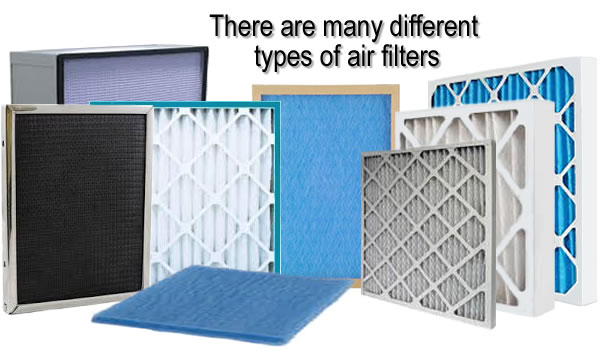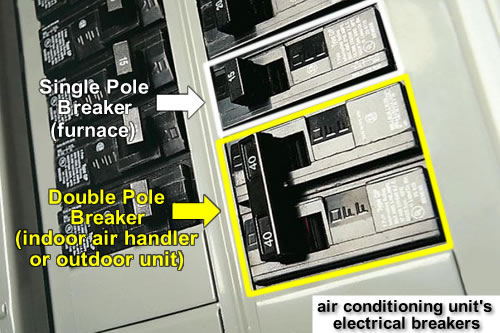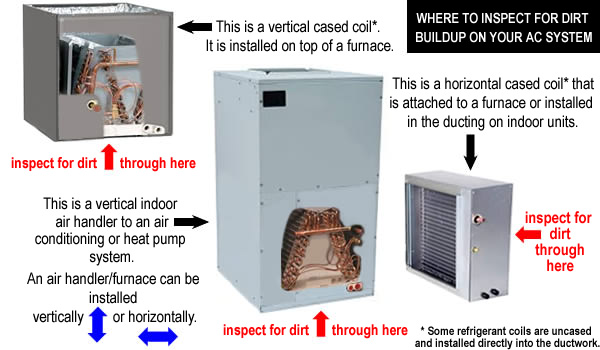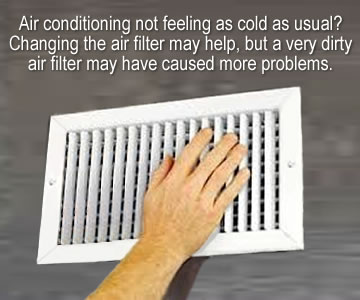Your air conditioning system use to work fine. But, one day you notice it doesn't seem to be cooling like it use to. Then you remember you need to change the air filter...
When was the last time you changed your air filter?
Most people have done this; life gets busy. You may have forgotten to change the indoor air filter after last season, and when you turned on the air conditioning system; it doesn't work well, or you find that the indoor coil and refrigerant pipe has iced up. You've gone online to find that if the outdoor unit and indoor (blower) fan are running; it's most likely a low refrigerant problem, or a dirty air filter. You open the indoor unit, or filter access, to pull out a completely clogged or a very dirty air filter. You replace it with a new one, or clean a washable type filter, and that should do the trick, right? Well, to understand the after-effects of the situation, you first need to understand how heating and air conditioning air filters work.
Life of an air filter.
A standard (disposable) or basic washable air filter only traps 90-95% of dirt and airborne contaminants passing through it. This is when it is new or clean. This can decrease by 1-2% after every full day of usage. When any air filter gets dirty, it does not stop trapping incoming particulates. Its material structure starts to break down and becomes laden with particle buildup. This is when the air filter restricts any air flow, for the system to perform properly, to pass through it. Pressure, from the force of the indoor unit's blower assembly (motor and wheel), will start to pull the trapped dirt through the filter. The particles that make it through are going to get caught in:
A: the indoor refrigerant coil (evaporator)
B: the indoor unit's blower motor and wheel
C: the supply ducting (ductwork coming out from the indoor unit)
D: back into your house or office.
Don't get me wrong, disposable air filters are a good media to maintain a standard amount of debris from entering your system, but they need replacing on a monthly basis, especially during an active season (winter/summer). Every type of air filter can become very dirty depending on the amount of usage and the amount of particulates entering the system. If you have problems with dirt, or other airborne contaminants, there are many different types of air filtration options to choose from to fit your needs. Do the research. Air conditioning air filters.
What to do next if your air filter is clogged or very dirty.
If you removed a dirty air filter, you need to check the indoor refrigerant coil for dirt that may be restricting air flow. Before inspecting your air conditioning system, you will need to turn off the high-voltage electric to the system by turning off the electrical breaker to the indoor unit. Do not rely on a service switch!
Go to the air conditioner's thermostat that controls the system. Make sure your "COOL" switch is set to "OFF". Turn the thermostat setting from "FAN AUTO" to "FAN ON". Go to the breaker panel (fuse box) and if you turn off the correct breaker, the indoor unit's blower will shut down. If the indoor unit's fan continues to run, you did not shut off the correct breaker (even if it is labeled as such). You will now need to find the correct breaker by shutting off one breaker at a time until you find the one that shuts the indoor unit's blower off. Now label it.
Checking the indoor refrigerant coil for excessive dirt blocking air flow.
Put on some durable gloves that will keep you from getting cut by metal edges or screws, and have a flashlight with a strong light beam (LED lights work best). Locate where the two copper refrigerant pipes enter the indoor unit. They may both be insulated or just the larger pipe. The hard plastic pipe(s) or hose(s) below the refrigerant lines are for removing water (condensation) from the coil's drain pan.
Behind the metal is the indoor refrigerant coil to your air conditioning or heat pump system. See the illustration above to identify the location of your refrigerant coil. If the coil is separate from the indoor blower unit (cased or uncased), you will have to remove the coil's access door to inspect the fins. If the coil is installed inside of an air handler, you may have to remove the front panels. If the refrigerant pipes are keeping you from completely removing the door, pull back on the opposite side of the panel to inspect the fins. Never pull on the side the refrigerant lines are blocking, or cause the panel to press into the pipes; you could easily cause the sealed refrigerant piping to bend or split. Depending on the installation or design of your system, it may not be easy to inspect the refrigerant coil's fins for examination. You can try using the filter access by removing the filter. I do not recommend cutting or removing anything that could cause damage to you or the system. If you do find a way to see the indoor coil's fins, use your flashlight for a closer inspection.
The fins are a shiny to a dull light-gray metallic thin metal; never brown or black! If you can see the fins and there is some surface dirt, you can use a coil cleaner, or dish detergent and hot water in a spray bottle (80/20), and another bottle with only hot water for a rinse. Never touch the fins with a glove, cloth or sponge! The metal fins are very sharp and can tear and trap the material. Never scrap the dirt off with any edged tool, plastic or metal! This will bend the fins and restrict air flow. Just spray on the detergent and rinse. We recommend spraying on the detergent and letting it sit for 5-10 minutes. Then rinse the coil with a hot water spray. You want to perform this procedure allowing the detergent and rinse to flow naturally down the fins and into the drain pan and out through the condensation pipes. Some water may drip into the indoor unit. A small amount is allowable. If you find that too much detergent or water is dripping into the air handler or furnace, you need to cut back on the volume of your spray, or wait until the detergent mix/water has drained off the coil.
This procedure is only for a refrigerant coil with a small amount of surface dirt and you can visibly see all the fins. If the coil is completely clogged with dirt and you can only see some of the fins or none at all, you will need a professional cleaning. The technician may have to remove the evaporator coil and even the motor and blower wheel from the indoor unit for a proper and thorough cleaning. Sufficient air flow is crucial to keep a system working at its peak efficiency and cooling capacity. With a clean indoor unit, your air conditioning system will work at peak performance. Just remember to keep that air filter changed!
Direct from the Tech.
If you need a professional coil cleaning, you may want to consider having your ductwork cleaned to increase your overall indoor air quality. With a good air filter, clean fan motor, blower wheel, and refrigerant coil, and even cleaned ductwork, you will notice an improvement in air quality, system performance and conditioning, and healthier living.





